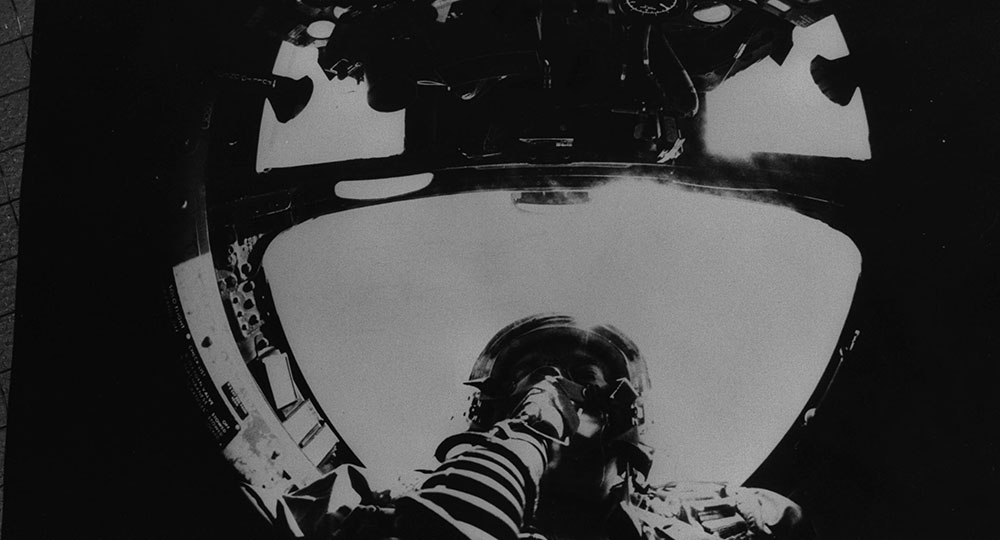Israel’s ‘Pearl Harbor’
An Israeli political scientist looks back 50 years at the 1973 Yom Kippur War.
Spies warned that conflict was imminent. Enemy troops were visibly massing. Yet, when the attack came on October 6, 1973—Yom Kippur (the Day of Atonement), the Jewish Sabbath, and the 10th day of Ramadan—it caught an overconfident Israel unprepared.
Israel Defense Forces (IDF) intelligence insisted Egypt and Syria did not want a confrontation. The Mossad (Israel’s national intelligence agency) supposed otherwise and on October 4 learned that Soviet civilians were evacuating Egypt and Syria. Only on Friday, October 5, was Israel’s cabinet persuaded that war was coming.
IDF Chief of Staff David Elazar pleaded for a preemptive strike. Defense Minister Moshe Dayan was hesitant. Prime Minister Golda Meir worried that the administration of U.S. President Richard M. Nixon—in the throes of the Watergate scandal—would blame Israel if the Jewish state struck first or even mobilized its citizen army. Only on Yom Kippur morning did Meir authorize the call-up. Because there are no broadcasts on Yom Kippur, messengers had to alert reservists, sending them rushing from home or synagogue to military staging areas.
At 2 p.m. on October 6, Syria in the Golan Heights and Egypt in the Sinai launched hostilities; and Israel was unprepared and hit hard—much like the United States was when the Japanese attacked Pearl Harbor on December 7, 1941.
The combat was chaotic, fierce, and traumatizing. Israel was unready, outgunned, and outnumbered. IDF brass had assumed military intelligence would give them weeks—not hours—of warning to prepare. On the southern front, some 70,000 Egyptian forces traversed the Suez Canal to attack the 100-mile-long Bar-Lev Line (a chain of ramparts) in the Sinai desert defended by merely 500 IDF troops.
From the Golan Heights in the north, Syria’s Soviet-manufactured tanks reached the Sea of Galilee and repulsed IDF counterattacks. Soviet-supplied compact antitank missiles made life hellish for IDF tank crews, while Moscow’s mobile surface-to-air missiles initially presented insurmountable obstacles for Israeli pilots. Syria was the more immediate threat.
As the land, air, and naval war unfolded, with Arab forces advancing on all fronts, General Elazar warned on October 7 that the “Third Commonwealth”1 was about to fall. Moshe Dayan suggested readying an atomic bomb for a demonstrative explosion to warn the Arabs. Golda Meir nixed the proposal but gave discreet orders to assemble Israel’s tactical nuclear weapons to stave off total defeat.
The Tide Turns
Then the tide began to turn. It took until October 10 to push the Syrians off the Golan Heights. IDF artillery bombarded the outskirts of Syria’s capital, Damascus.
Israel’s counterattacks in the south came on October 14 and 15, when the IDF crossed to the Egyptian side of the Suez Canal. An attempt to encircle Ismailia in Egypt and the Egyptian Second Army failed. But the IDF reached within 70 km (43.5 miles) of Cairo. Egypt’s Third Army in Sinai was surrounded.
Throughout the war, the Soviets resupplied Egypt and Syria. Jordan, Iraq, Morocco, and Kuwait sent troops. Palestinian irregulars launched attacks from Lebanon. Cubans bolstered the Syrians. North Korean pilots confronted the Israeli Air Force (IAF). Israel was in trouble.
The U.S. airlift of military hardware began arriving in Israel only on October 14. Europe had refused to let American planes refuel. The Palestine Liberation Organization (PLO) messaged Washington that it would join peace talks if the resupply were stopped.
The cost of the war was astounding. Syria suffered 3,500 killed and lost 1,100 tanks and most of its warplanes. Some 15,000 Egyptians were killed, and 8,300 were taken prisoner and later exchanged for 230 IDF prisoners of war (POWs). The Syrians and Egyptians tortured and killed scores of Israeli POWs.
A staggering 2,800 Israelis out of a 3.2 million population were killed (2,225 in the first week) and 8,800 wounded. The deaths were the equivalent in 1973 of the United States losing 185,412 soldiers in battle—50,000 more than it lost in World War I, Korea, Vietnam, and Desert Shield/Storm combined.2
Then the war petered out. With their Arab clients thwarted, the Soviets voted for a ceasefire on October 22 under UN Security Council Resolution 338. The Arabs charged Israel with breaking the truce. On October 25, UN Security Council Resolution 340 reiterated the cessation of hostilities. Moscow proposed a joint Soviet-U.S. force to implement the truce, threatening to act unilaterally otherwise.
The threat led the United States to put its military on strategic alert. U.S. Secretary of State Henry Kissinger sent Israel conflicting signals, warning Washington would “dissociate” from Jerusalem while querying how much longer it would take to mop up Egypt’s Third Army.
In a surprise development on October 28, Cairo agreed to negotiate the Third Army’s fate directly with Jerusalem at Sinai’s Kilometer 101. An agreement was signed on November 11 that left Egyptian troops on the eastern side of the Suez Canal, authorized the UN’s humanitarian resupply of the Third Army, and involved an exchange of POWs.
An Intelligence Debacle
The war was an IDF intelligence debacle. A cocky general staff had ill-prepared Israel’s military for the latest Soviet weaponry. Military Intelligence Chief Eli Zeira received multiple indications that war was imminent yet failed to comprehend why Egypt’s leader, Anwar Sadat, would go to war when there was no way he could recapture the entire Sinai.
His analysts misread massive enemy mobilizations as Egyptian war games or Syrian jumpiness. Despite having spies and electronic signal-tapping, Zeira was convinced the Egyptians would not attack because they did not yet know how to use newly delivered Scud missiles and had no long-range bombers.
Every assumption about “the next war” proved wrong, explained journalist-historian Abraham Rabinovich in his book The Yom Kippur War. IDF intelligence did not provide ample warning; the air force could not cope with the newest Soviet antiaircraft and antitank missiles; and with the IAF constrained by surface-to-air missiles, the infantry lacked the proper artillery to compensate for the lack of airpower.
Israel’s fact-finding Agranat Commission, headed by U.S.-born Shimon Agranat, issued its report on April 2, 1974. Meir, Dayan, and the Mossad were absolved, while Elazar and Zeira were cited for “grave failings.” The electorate didn’t buy it. Meir resigned, and Dayan was eased out.
An Arab Victory
The war was a psychological and diplomatic victory for the Arabs, even as it showed they could not overcome Israel militarily. The Arab-led OPEC (Organization of Petroleum Exporting Countries) imposed an embargo against the United States in retaliation for resupplying the IDF and to sway American policy away from Israel.
Historians believe Egypt’s Anwar Sadat had limited war goals, namely, to establish a bridgehead in the Sinai to negotiate the return of the entire peninsula. Sadat, who had assumed power in October 1970 after Gamal Abdel Nasser’s death, had already asserted that he accepted a 1969 Nixon administration peace plan that promised an Israeli pullback to the 1949 armistice lines. Syria’s Hafez al-Assad ignored Nixon’s proposal.
Kissinger saw the war as an opportunity to initiate a process by which Israel would exchange captured territory for peace. Meir was convinced that Kissinger had withheld intelligence that would have confirmed the impending attack and, furthermore, held up resupplies to the IDF, wanting Egypt to finish the war in a position of strength.
Over Israel’s protests, Kissinger convened an international peace conference in Geneva in December 1973, circumventing Israel’s longstanding demand for direct bilateral talks. He falsely assured Jerusalem that Washington would block the PLO from the diplomatic arena.
By bringing together Egypt, Israel, Jordan, the Soviet Union, the UN, and the United States under one roof (Syria refused to attend without the PLO), Kissinger changed the zero-sum perception of the conflict. The Arabs ceased to look like the intransigent enemies they were, and Israel was forced to respond by trading land for peace.
Kissinger spent 34 days traveling in the Middle East to bring about a Syria-Israeli armistice deal. He pressed Israel to cede parts of the Golan that it had secured during the war. On June 5, 1974, Syria signed an agreement in Geneva that freed IDF POWs and committed Damascus not to mass troops on the Heights.
The war demonstrated that the Arabs would not abide by the outcome of the 1967 Six-Day War in which Israel gained control of the Golan Heights and the Sinai. Paradoxically, the controversy over whether the PLO would be invited to the Geneva Conference reaffirmed the centrality of the Palestinian problem. The ensuing oil embargo chipped away American-Jewish confidence in supporting Israel.
The war also upended the Arab League’s post-Six-Day War Khartoum Resolution of 1967: “No peace with Israel, no negotiation with Israel, no recognition of Israel.” Instead, the sense now, real or not, was that Israeli concessions could deliver peace. And lastly, within Israel’s internal political arena, the war weakened the long-ruling Labor Party, paving the way for Likud and its religious allies to govern.
ENDNOTES
-
- Israel considers the First-Temple period to be the First Commonwealth; the Second-Temple period, the Second Commonwealth; and the State of Israel, the Third Commonwealth.
- “America’s Wars,” Department of Veterans Affairs (tinyurl.com/USWARR).
FOR FURTHER READING
The Yom Kippur War by Abraham Rabinovich (updated 2017).“Military Intelligence Chief Misled Israeli Leaders Ahead of 1973 War, Declassified Doc Reveals” by Ofer Aderet, May 9, 2020, Haaretz (tinyurl.com/Aderet-1).
“Enigma: The anatomy of Israel’s intelligence failure almost 45 years ago” by Bruce Riedel, September 25, 2017, Brookings (tinyurl.com/BrookingsIs2).
“Missing Signal” from “The ‘Special Means of Collection’” by Uri Bar-Joseph, The Middle East Journal, Autumn 2013, cited in The Wilson Quarterly, 2014 (tinyurl.com/Missing-U2).
Photo: Tomarkin Yigal/GPO








